Wheel bearings allow a smooth rotation of the wheel on the vehicle, so they can be termed as the crucial component of a vehicle’s drivetrain. Almost always, the signs are there when a wheel bearing starts to go. However, they usually start out as small symptoms. Ignoring these symptoms can force you into a situation where repair can be quite costly and even risk lives by creating hazardous driving conditions. Thus, if you’re able to understand these signs, you are very likely to save a lot of your valuable time and money. In this article, we will go through ten distinct yet common signs that indicate your vehicle’s wheel bearing is failing. Remain updated and ensure that your vehicle is serviced only when required by knowing the appropriate symptoms and when to go see a mechanic.
What are the most common symptoms of a bad wheel bearing?
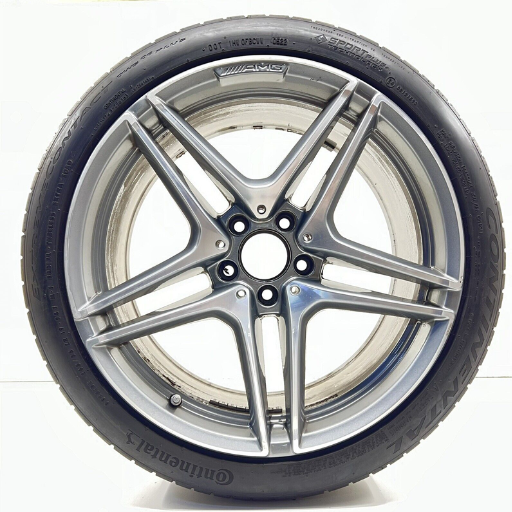
Several symptoms can assist in diagnosing worn-out wheel bearings. Among these sounds, which are heard when attempting to turn the wheel or as the vehicle accelerates, noise changes from grinding to hums or growls. A person may also experience abnormal vibrations felt in the steering wheel or arms as the vehicle is in motion and, for example, feel as if they are restraining a large child. An example is when the steering or front wheels are pointed straight however, the car drifts towards either the left or right side of the set path. The degree of smoothness when turned also decreases. In testing for a faulty wheel, the general guideline is if it spins without resistance, the implication is that the wheel bearings are faulty. It is important to treat these signs as soon as possible to avoid any more damage and maintain adequate, safe driving conditions.
Unusual noises: Humming, grinding, or growling
a wheeling bearing issue is always the case, and it could be associated with some unusual and odd sounds such as humming, grinding, or growling. Since these sounds are somewhat stronger than the example given above, during the inspection of the vehicle, I focused on the bearings since they are a problem affecting the safety and performance of the vehicle. If one decides to ignore them, the chances of other factors being damaged over the course of time increase, including the wheel assembly itself. This is why I highly suggest you don’t hesitate to seek out a professional and have them diagnose the issue.
Steering wheel vibrations and looseness
The presence of steering wheel shake or play can be a pointer of the vehicle having problems with the wheel, suspension, or alignment systems. Unbalanced tires, worn-out suspension parts, or even broken tie rods are some other frequently mentioned ones. All these factors may affect stability and safety while driving. If left unattended, these signs can and most likely will lead to increased wear and tear of crucial vehicle systems. Addressing these signs and getting the parts repaired professionally will not only make the handling better but also eliminate the chances of the systems being damaged further and ultimately being expensive to repair.
Uneven tire wear and wheel wobble
abnormal patterns of wear and wobble of the wheel almost always indicate some other problem that needs to be addressed as a matter of urgency. I have noticed that such problems are often due to unbalanced wheels, inadequate rotations, or faulty suspension systems. Early intervention not only enhances the productivity of the vehicle but also helps in prolonging the lifespan of the tires, making motoring safer. My suggestion is to have periodic maintenance and check-ups so that such problems do not progress to more severe ones. It is better and cheaper to prevent the problem than to fix it.
How can you tell which wheel bearing is failing?
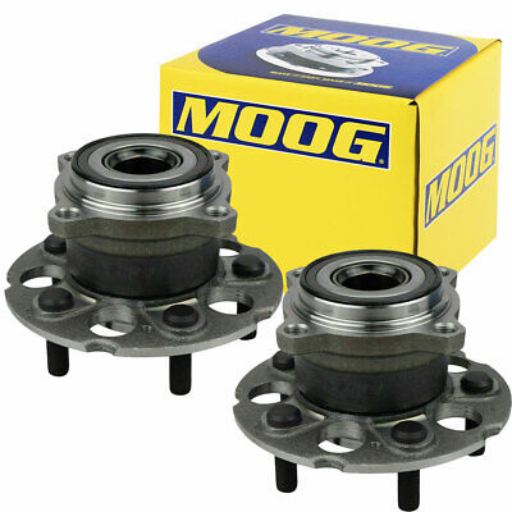
It is a common occurrence for me to experience the detection of a wobbling wheel bearing, and there are a few crucial indicators you can use to tell which one is the cause. It usually goes that way for me:
- Unusual Noises – Conceivably the most evident feature of a defective wheel bearing is a droning noise that is magnified as the vehicle speed increases. To know which side the problem is, it is advisable to pay attention. If the noise becomes more pronounced when you turn to the right (say), it is very likely that the bearing on the left side is at fault.
- Vibration or Wobbling – A bad wheel bearing can, sometimes, give a vibration or shake at the steering wheel when the vehicle is at rest and during certain speeds. This sometimes is experienced as grittiness with the car driving and steering not being as smooth as it should. If this is experienced, it means that the side of the car wheel that is groaning or under wobbling may have a bad bearing.
- Excessive Play in the Wheel – Leverage on the inspecting principles, I also do some hands-on targeting. For instance, I lift the car, then hold the case wheel with two hands, on the lower and upper ends, and turn it in a shaking motion. A small amount of looseness experienced would most probably mean the existence of a loose or damaged bearing.
- Heat from the Wheel Hub – In case the wheel bearing becomes loose, heat will be produced during operation because of the friction heat. Carefully feel the heat around the wheel hubs after driving for some time as this cis lose to the hot surfaces, but be cautious as hot areas might also indicate malfunctioning caliper problems.
- Performance-Related Warning Lights – For modern vehicles, a bad wheel bearing could also activate the anti-lock brake warning lights or traction control lights. This is because the wheel speed sensor, which is sometimes combined with the bearing, fails with the wheel bearing over time.
Combining these methods is vital in diagnosing the specific failing wheel-bearing unit. Importantly, if you notice one or more of these symptoms, I suggest that you deal with the problem as soon as possible, hence preventing further damage or compromising your own safety.
Identifying the source of noise while driving
While driving, in order to identify the source of the noise, first note down the type of sound produced as well as when it is produced. A high sound squeal may suggest a worn brake pad, while a humming or a growling noise indicates a defective wheel bearing. If the sound varies with speed or turning, it is probably associated with some parts of the drivetrain or the suspension. Thus, for diagnosis that is more accurate, a professional is suggested for examination in order to receive the desired treatment.
Performing a jacking test for play in the bearing
Whenever it is time to examine for bearing loosening, I begin by making sure that the vehicle is properly positioned straight on a guarded elevated jacks and `jack stands’. After the car is raised in the air, I go closer to the wheel in question. I grab the tire at 12 and 6 o’clock positions and rock the tire slightly to inspect for any looseness or play. In the event that there is a certain degree of movement, the indefinite elongation appears to be that the wheel bearings are worn or broken. This is a simple method that assists me in gaining a good understanding of the condition of the bearing and the required extent of any further repairs or replacements. Focus on safety and the right tools during this procedure.
Using diagnostic tools to pinpoint the faulty bearing
Even without the absence of any reference, using diagnostic devices in order to determine a defective bearing is an accurate and quick method. Devices such as mechanic’s stethoscopes, IR thermometers, or vibration analysis tools enable diagnosis with a lot more accuracy. To give an example, consider a mechanic’s stethoscope, which enables one to listen to grinding or rumbling sounds, or a vibration analyzer, which measures abnormal frequencies emitted by a defective bearing. Also, an Infrared thermometer is capable of determining excessive heat due to a damaged bearing. These diagnostic tools make sure that you are able to accurately identify the problem and reduce wastage of both time and resources. When using diagnostic equipment, always check the vehicle´s standards and safe practices.
What causes wheel bearings to go bad?
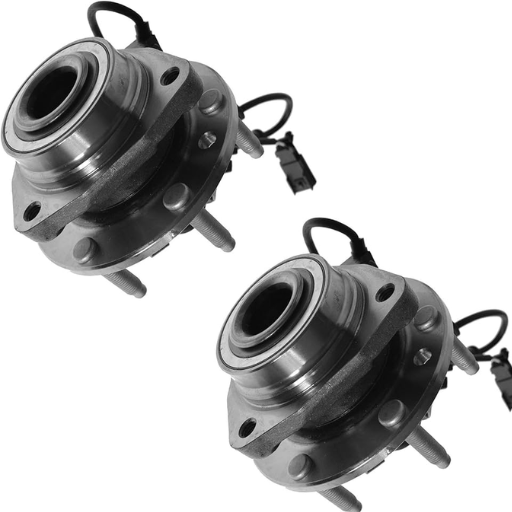
Wheel bearings usually fail for several reasons, but in my case, they include poor installation, an inadequate amount of lubrication, or being exposed to tough conditions. Improper or misaligned knobs on components may lead to abnormal wear. He likewise points out that inadequate or dirty grease results in excessive heating and early bearing failure. Water, road salt, and other detritus, over time, can also intrude on the bearing and corrode it, weakening it. If you lubricate your wheel bearings and replace them often, their life span can be greatly enhanced.
Normal wear and tear over time
the wheel bearings have a life cycle that includes deterioration caused by normal wear and tear, even if the vehicle is well looked after. This is certainly not true in the case of wheel bearings, which experience constant operation under loads and friction and with shafts that rotate. Sooner or later, these factors will result in material wear with time and operation.
To understand the reasoning behind this situation, let us analyze it in the light of appropriate parameters:
- Load Forces: The vehicle’s weight is carried, and the forces encountered when driving over uneven surfaces or turning sharply are managed by bearings. These conditions, over time, exert pressure on the internal parts until they totally wear out.
- Friction: pressing the steering leads to more lubrication problems. Regardless of proper lubrication, a degree of friction is always present whenever the wheels are rolling. This weakens and smoothens the internal surfaces of the bearing over time.
- Heat: When there is continuous movement in the bearing assembly, heat is built up. The permanent or too extensive application of this heavy or high temperature over time bulges or sinters the metal components and even reduces the impact of the grease.
- Environmental Exposure: There is a tendency for dirt, moisture, or any other road contaminant bearing to occur. Some of the particles may even bypass the protective seals into the assembly, thus causing more wear.
While this wear is indeed unavoidable, it is certainly controllable through regular check-ups and maintenance. For example, the techniques or methods involving rolling bearings maintenance include identifying problems such as loud sounds and wobbles in the wheels to extend the rolling bearings’ useful life and increase safety.
Poor road conditions and impacts
Unfavorable road conditions, in turn, have a detrimental effect on the stiffness and durability of bearing elements. Uneven surfaces, shocks, and potholes can induce gradual assembly misalignment or deformation of the bearing. These factors additionally increase the bearing loads and hence negatively affect their efficiency and life expectancy. To reduce such effects, one needs to drive with care, carry out inspections, and ensure that all shock-absorbing components, such as suspension systems, are operating within design limits and do not increase the load on the bearing systems.
Contamination from water or dirt
Dirty water or dirt particles getting into the assembly can ruin even the greatest bearing assembly lifetime and its working capabilities, as this has a universal answer – lubrication. Such an infusion develops erosion and corrosion, which enhances the plausibility of failure due to higher friction being generated during operation. In this context it is important to ensure the integrity of seals and protective covers, regularly monitor such components for any breaches as well as use advanced quality lubricants that are able to resist contamination. Regular practice of maintenance as well as environmental controls are the crux of this problem.
How serious is a bad wheel bearing, and can you still drive?
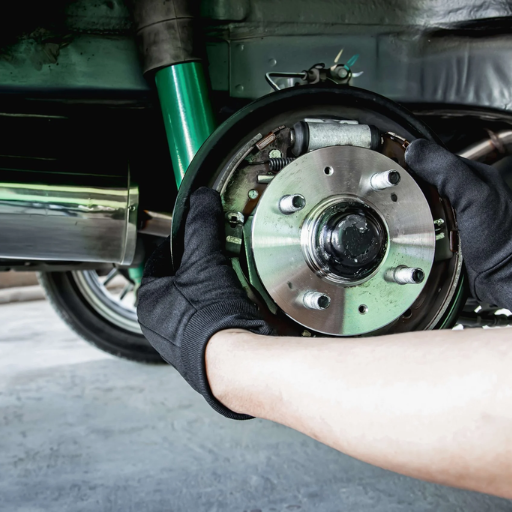
never ignore a bad wheel bearing, as it could lead to serious complications in your vehicle and be quite a challenging situation. Personally, I have noticed that For the sake of averting danger and ensuring your safety, I must highlight the fact that it is not safe to drive in such conditions, as a compromised wheel bearing negatively impacts steering, braking, and the general control of the vehicle While it may be possible to tolerate such a situation for a brief period of time, moving forward with it is recommended against. The wheel may actually seize or come off if such a situation persists. My recommendation is that it is best to get the vehicle checked for damage as soon as possible to prevent risk to self as well as ensure that no other areas are damaged that would be costly to repair.
How long you can drive with a bad wheel bearing
However, my experience has been observing that driving with a bad wheel bearing is quite risky and should not be practiced. As time goes on and the bearing continues to fail, the ability to drive the vehicle becomes significantly worse, as there is a risk of damaging other parts of the vehicle, loss of control of the vehicle, and, in the worst-case scenario, deviating to a situation of complete failure of the vehicle. In any case, if any symptoms like grinding noise or vibration tell you that something may be off, then diagnosing that issue sooner rather than later ensures safety for you, and it also helps you save considerable amounts of money on repairs down the road. That’s why I suggest the following: do not wait—bring in for inspection and repair immediately.
When to stop driving and seek immediate repairs
In deciding when to seek immediate repairs instead of driving your vehicle any further, this is how I do it as a professional. Now, there are a couple of symptoms that you should not take lightly. Allow me to detail them to you one at a time:
- Grinding or Growling Noises
Hearing a sound in the vicinity of your wheels that resembles grinding could mean that the wheel bearing is bad, which is serious. Sometimes, this sound gets worse with more acceleration. The situation is dangerous since it indicates that the bearing has either gotten dry or worn out internally.
- Excessive Vibration or Wobbling
Steering wheel and other forms of vibration or wobbling can also be termed as another cause for concern. This is most often caused by a damaged or loose wheel bearing and relatively low bolting of the wheel, which impacts the car’s stability and could be a major threat at higher speeds. If you observe this phenomenon, do not drive the vehicle; get it inspected as soon as possible.
- Uneven Tire Wear
Worn-out or broken wheel bearings tend to make certain tires wear out much faster than others, exhibiting an uneven tire wear pattern. Although at the start appearance, it does not seem like a problem that needs immediate action, it is alarming, and it’s better not to neglect it as it might only worsen with time.
- ABS Warning Light Turns On
In most of the vehicles manufactured today, the sensors used in the Anti-lock braking system (ABS) are built into the wheel bearings. Thus if the ABS light indicator on the dashboard is activated, it might be an issue with the bearing that is interfering with the sensor. Without the ABS functioning properly, for example, in an emergency, your braking performance will be greatly reduced.
- Wheel Play or Movement
If the car is raised and the wheel is rocked back and forth, if you see that there is excessive play at that rendered wheel, then be attentively sure that there’s a problem with the wheel bearing. It indicates that the bearing has failed to support the wheel sufficiently, which poses a great safety hazard.
In the case of noticing any of such symptoms, my recommendation is very straightforward – do not hesitate. Operating a vehicle with a bad wheel bearing can have devastating consequences. The worst-case scenario would be a situation where a wheel becomes detached from the vehicle. As the stakes are high, have the problem professionally diagnosed and serviced immediately.
How much does it cost to replace a wheel bearing?
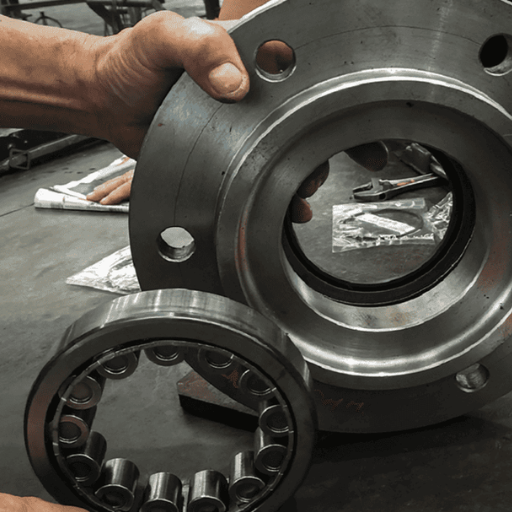
The amount you will end up spending for replacing a wheel bearing does vary with various factors like the manufactured year of the vehicle and the model of the vehicle, the region where you are operating from, and the requirement of either a single wheel bearing change or multiple bearing changes, the average cost across all regions is about 200…. Per wheel bearing change, the capital required to change and to pay for the labor is approximately 500. The costs of servicing this high-end or performance vehicle simply increase with the specialized parts and labor needed. Seek guidance from a trusted auto specialist for a more comprehensive idea of the market and average price.
Factors affecting wheel bearing replacement costs
a number of variables determine the cost that one would incur to replace a wheel bearing. The car you own is important, for example, luxury cars or high performance cars require covering more expensive and alternative parts and services. Further, one’s location has an impact on wage tariffs; urban centers are more likely to charge higher rates. There are also additional parameters that may influence the pricing. When it’s possible to do a repair for a failing part, for example if the hub assembly or an axle shaft should be replaced, it would increase the total price. Finally, the cost may also vary depending on the number of units being replaced, i.e., if you are changing one bearing on an axle and replacing two other load-bearing elements. Always remember to have a competent mechanic take a look at your car for a list of work and costs required for the performance of the car.
DIY vs. professional replacement expenses
Replacing the wheel bearings in your car is a costly and, at times, labor-intensive job that can either be done by the owner of the vehicle or a professional. If a person decides to do it themselves and has the correct and legal equipment, such as a bearing press, and has the right amount of time to put into the job, that would cut labor costs down significantly. If a person does have the tools and the time, they will need mechanical knowledge; otherwise, risks of inaccurate bearing installation increase significantly. The bearing installation could lead to safety hazards or end up being a financial burden if they end up replacing it with a new one. Getting it replaced solely by an expert may not be within reach of some people as the hourly rate charged is much higher; however, the upside to getting it done by an expert is that the job gets done smoothly and within given time frames, and if not, the job is done free of cost due to guarantee. For many, especially those who have never done it before, a professional replacement is an ideal option as it reduces the chances of errors that may get out of hand.
Tips for saving money on wheel bearing repairs
One way of preventing high wheel bearing repair costs is to look for good aftermarket parts that are cheaper than the OEM but still do the job nicely. Search for various repair retailers and obtain their quotations for comparison purposes, and inquire whether they offer discounts and promotions. Consider preventative measures whereby maintenance is done regularly, and abnormalities, such as noise from squeaky components and vibrations, are picked up early. If you are confident enough in your mechanical competence, attempt the repair whilst making sure you have all the needed tools and correct steps to do it. Also, dealing with the problems at early stages helps to avert the destruction of other parts, which will save time and cost in the long run.
Can you prevent wheel bearings from going bad?
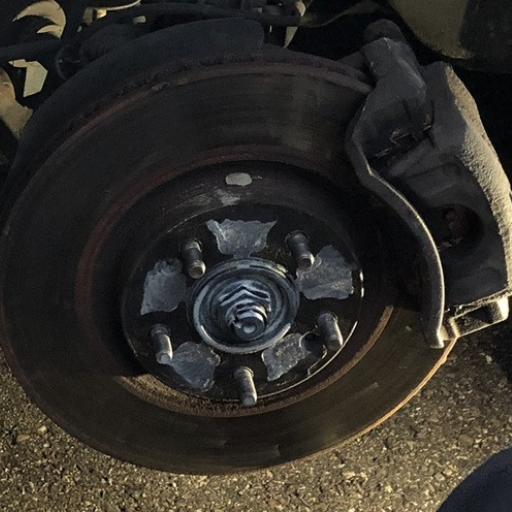
How easy is adjusting the wheels in alignment to sidestep the bearing’s wheel from collapse? Let us understand how true this statement is and how easy it is to offset wheel bearings. From this statement, it’s clear that if we were to maintain proper alignment and check on the bearings, one could significantly increase the lifespan of wheel bearings. The statement clearly indicates the need to check for any loose ends that a vehicle might be having and address them and, at the same time, possess certain driving habits that are conducive to the well-being of wheel bearings. Nevertheless, consider that beyond these measures, it is impossible to cancel out the physical nature of machine components—including average sputter— so in layman’s language, avoid being a nasty clown. Hence, while average wear of bearing threshold can never be avoided, one can delay repairs and replacements. One has to however be realistic, this may not be possible for every type of bearing in every vehicle or situation.
Regular maintenance and inspection practices
It is critical to routinely inspect wheel bearings to protect them from dust and moisture that can lead to rusting. Ensure that the bearings are adequately lubricated using grease in order to reduce scraping wear on both the wheels and the bearing surfaces. Start by examining the condition of the seals, as these provide protection to the wheel bearings during use. As part of the wheel bearing routine inspections, resolve X over women noise emission, erratic tire wear, and excessive wheel angle looseness. Minor faults promptly amended can lead to higher efficiencies and reduced wear and tear in the long haul of the operations, thus making the vehicle reliable and functional in the long term.
Proper driving habits to extend bearing life
In my practice in the field, I have learned that the vital aspect that can prolong the life of wheelchair bearings is observing proper driving practices. One such approach is to avoid overloading the car since surplus weight amounts to excessive pressure on the bearings, leading to faster wear out of the bearings. Smooth and coordinated driving techniques such as gradual acceleration or up braking also help minimize stress on the wheel assemblies. Furthermore, due care must be taken while steering across rough or bumpy roads, as too many shocks can lead to early failure of the bearings. Together with customary practices, these practices guarantee the durability and dependable service of your wheelchair’s wheel bearings.
Choosing quality replacement parts
Selecting high-quality spare parts is vital to maintain the original efficiency and safety of the vehicles when opting for a replacement. This makes it important to settle for parts that have been supplied by credible manufacturers who conform with the standards set by the OEM (Original Equipment Manufacturer). Ensure that material quality is a primary concern as bearings of an appropriate design made from metals such as stainless or other high-grade alloys are designed to withstand thermal and mechanical grueling. Choose any other lower grade, cheaper alternatives that are less dependable for precision gears won’t last long and warrant more failures, which will bite in the cost eventually. Well-researched buying decisions will improve the consistency of vehicle use as well as enhance applicable durability.
Reference
- Kelley Blue Book: How Do I Know if I Need a Replacement?
- Quora: Signs that your wheel bearings are going bad
- Meineke: 6 Signs of a Bad Wheel Bearing
Frequently Asked Questions (FAQs)
Q: What are the most common symptoms of bad wheel bearings?
A: The most common symptoms of bad wheel bearings include unusual noises (such as grinding, humming, or rumbling), vibrations in the steering wheel or floorboard, uneven tire wear, and loose or wandering steering. You may also notice that your vehicle pulls to one side while driving or that the ABS warning light comes on. These signs and symptoms can indicate that your wheel bearing is bad and requires attention.
Q: How can I identify a bad wheel bearing by sound?
A: Wheel bearing noise is often one of the first signs of a problem. You may hear a grinding or humming sound that increases in volume as you accelerate. The noise might change when you turn the steering wheel or shift your vehicle’s weight. If you notice a noise coming from one wheel that gets louder as you drive faster, it could be a sign of a failing wheel bearing.
Q: Can a bad wheel bearing cause the wheel to fall off?
A: In extreme cases, yes. While it’s rare, a severely worn wheel bearing can cause the wheel to become loose and potentially separate from the vehicle. This is why it’s crucial to address wheel-bearing issues promptly. Bearing failure can lead to dangerous situations, especially if you’re driving at high speeds when the wheel bearing completely fails.
Q: How often should wheel bearings be replaced?
A: There’s no set schedule for replacing wheel bearings, as their lifespan can vary greatly depending on driving conditions, vehicle type, and quality of the bearings. However, most wheel bearings last between 85,000 and 100,000 miles. It’s important to have your bearings inspected regularly during routine maintenance and replace them when symptoms of a failing wheel bearing appear.
Q: Is it safe to drive with a bad wheel bearing?
A: It’s not recommended to drive with a bad wheel bearing. While you might be able to drive for a short distance, continuing to drive with a faulty bearing can lead to serious safety issues. A bad wheel bearing can cause uneven tire wear, affect your vehicle’s handling, and, in worst-case scenarios, cause the wheel to seize or detach. If you suspect your wheel bearing is bad, have it checked and replaced as soon as possible.
Q: How can I check for a bad wheel bearing at home?
A: To check for a bad wheel bearing at home, you can jack up the wheel and try to shake it. If there’s noticeable play or movement, it could indicate a worn bearing. You can also spin the wheel by hand and listen for any grinding or rough sounds. While driving, pay attention to any unusual noises or vibrations. However, for a definitive diagnosis, it’s best to have a professional mechanic inspect your vehicle.
Q: Can a bad wheel bearing affect my vehicle’s ABS system?
A: Yes, a failing wheel bearing can trigger the ABS (Anti-lock Braking System) warning light. Many modern vehicles have the wheel speed sensor integrated into the hub bearing assembly. When a bearing starts to fail, it can create inconsistencies in the wheel speed readings, causing the ABS system to malfunction and the warning light to illuminate.
Q: What causes wheel bearings to fail prematurely?
A: Several factors can cause wheel bearings to fail prematurely. These include driving through deep water or mud, which can contaminate the bearing, impacts from potholes or curbs, improper installation, using low-quality bearings, and normal wear and tear. Regular maintenance and careful driving can help extend the life of your wheel bearings.
